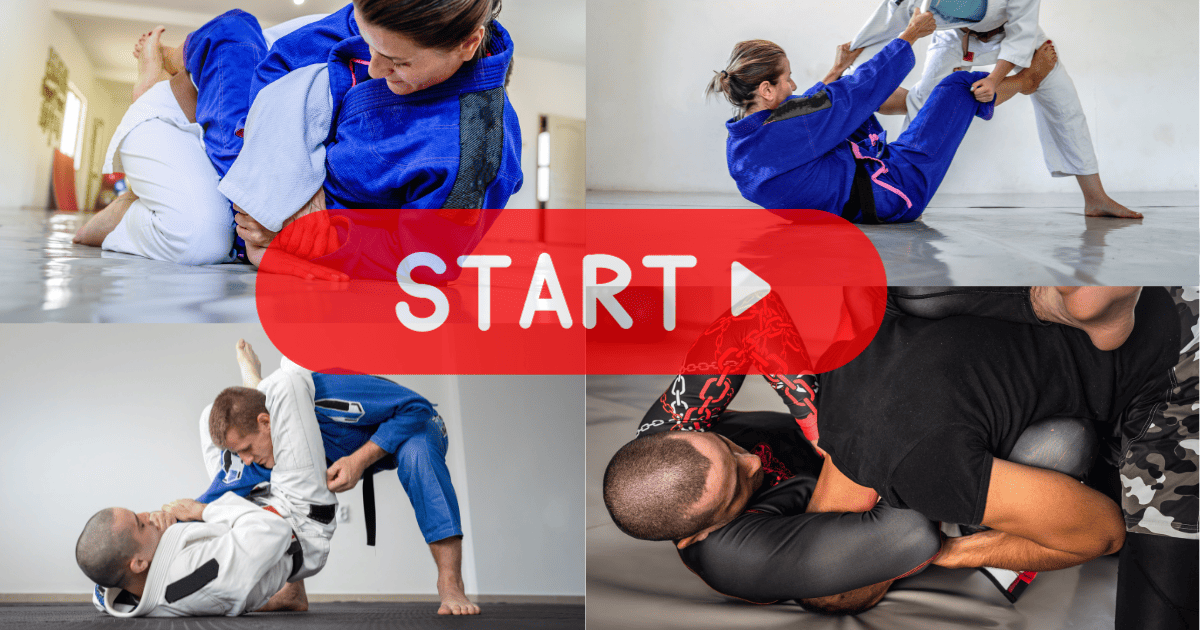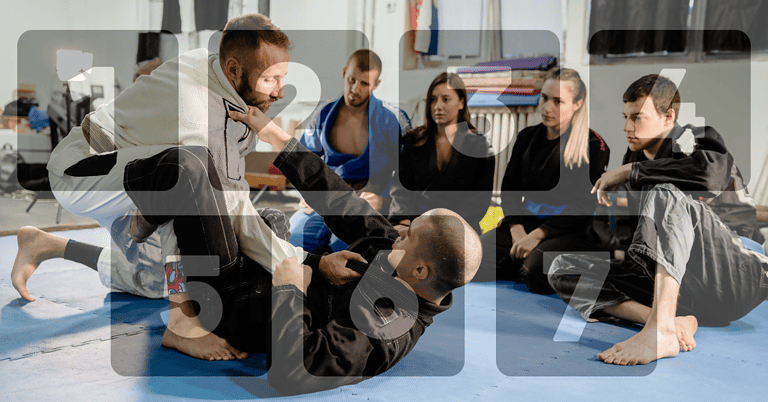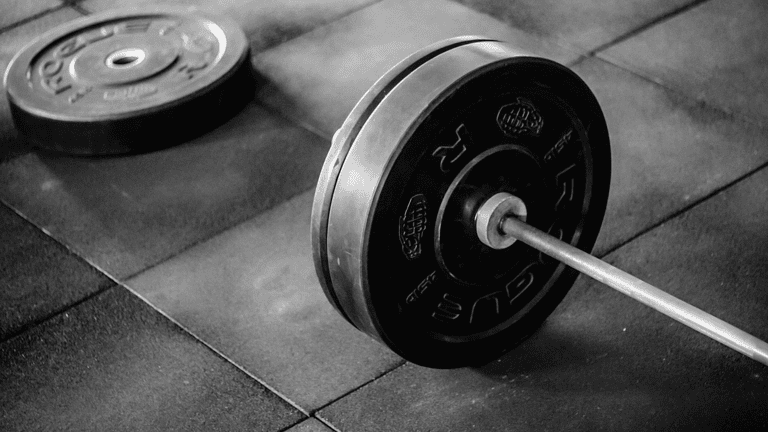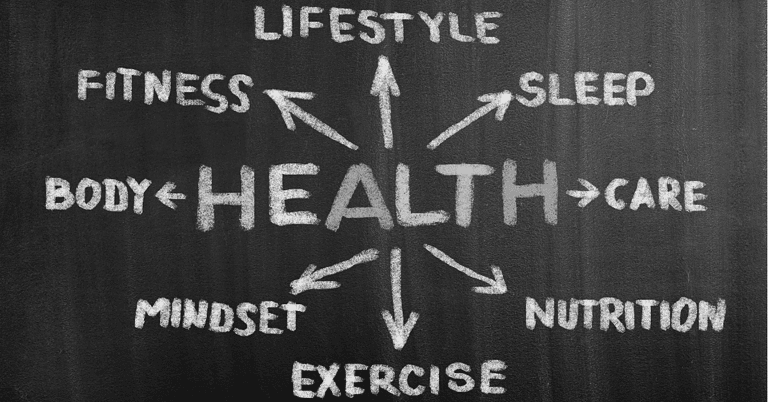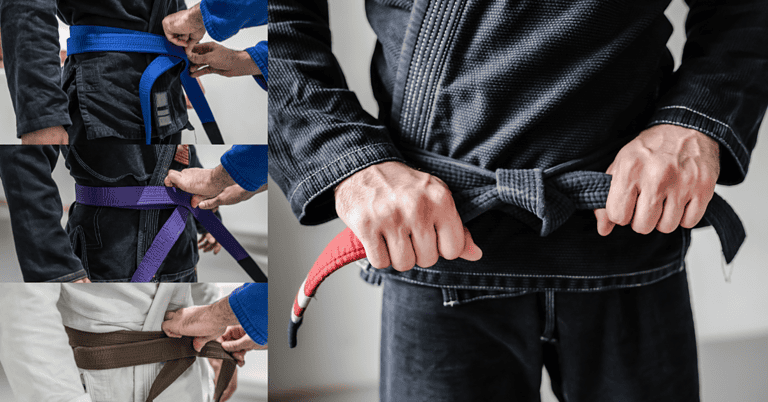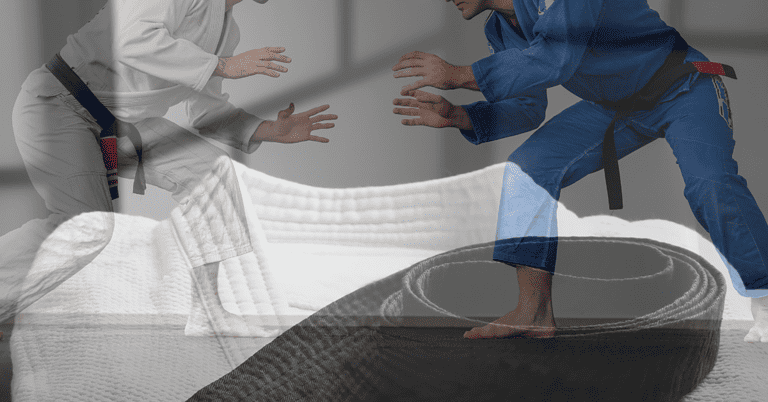How to Start BJJ
If you’re reading an article exploring the benefits of BJJ, I’m assuming you already know what BJJ is. If I’m wrong in that assumption, head down to the end of this article for my answer to the question “What is BJJ?” (you can use the Table of Contents to jump right to it).
However Brazilian Jiu-Jitsu got on your radar… whether it was from friends, family, media (or maybe even from my “5 Tips to Improve Health” article)… you like what you’ve heard so far and think you might like to give BJJ a try. So how do you take the next step, turn thought into action, and get started? Read on to find out.
How to Start BJJ
Location, Location, Location

The phrase “location, location, location” is often used in the world of real estate, but location can also play an important role in your BJJ journey. This is true for your location, the location of the BJJ school, and more importantly the relationship between your location and the location of the BJJ school.
On a side note… I tend to use the terms “school” and “gym” interchangeably when talking about training BJJ. I think of a school as a place of teaching and learning and a gym as a place of exercise and sporting activity… and I think both of these apply in this context. Is it a BJJ school? Yes. Is it a BJJ gym? Yes. 🙂
Getting back on track now… your location is important because, depending on where you live, you may have reasonable access to a number of different BJJ schools or at the other end of the spectrum you may have access to very few BJJ schools (or no BJJ schools). So the flexibility you have in trying to find the right BJJ school for you might be great or limited.
Many years ago when I was looking to start training BJJ, I knew that I would be far more likely to follow through and stick to it if the gym was conveniently located and easy to get to. So I specifically looked for BJJ gyms that were either close to my home or close to my work, and that would be my recommendation for you too (if you have the option).
I ultimately decided on a school that was very close to my work location, and I did so for a couple of reasons. For one, I normally left work and then had a long, traffic-filled commute home. By choosing a school that was close to my office, I was able to go there right after work, get in an awesome training session, and then by the time I was done and ready to head home, traffic had died down and my drive home was much, much easier. Plus, by not going home first and going straight to BJJ class, I avoided giving myself the opportunity to settle in at home and talk myself out of going to class.
So here’s what I did (and what you can do too) to find a BJJ gym. Go to Google Maps and type in your home address (or your work address). Then click the option to search nearby and just search for BJJ. Check out the results to see what options are close by, visit the websites, read the reviews, and make a list of contenders for your future BJJ home.
But I didn’t choose my BJJ school based solely on location. Though I did ultimately opt to start BJJ at the school that was closest to my office, there were other factors involved and the choice wasn’t just based on the school’s location.
Take a Test Drive

With your list of BJJ school contenders in hand, give each school a call or just stop by. Check out the class schedule and go watch a class in person. Better yet, see if the school offers free trial classes or a free trial period (e.g. a free week or a free month) so that you can actually step on the mat and get the real feel of a BJJ class. The idea with this “test drive” is to experience the school in person (not via the reviews of others) and get a sense for the overall vibe of the place.
Check out some of the fairly objective characteristics of the school. Is it a large or small facility? How many instructors are there? How many students are there (these will be your future teammates and training partners that you’ll get to spar with)? What does the class schedule look like? Your progress will be depend greatly on how often you train, so are classes available on a variety of days at a variety of times? Is there a beginner class? Is the gym clean and orderly? What amenities are offered (e.g. showers, sauna, locker room, etc.)? Does the school offer other classes besides BJJ? What is the parking situation? What is the “lineage” of the school (i.e. can you trace the school’s owner/ head instructor back to a reputable BJJ source)?
Also work through some of the more subjective characteristics of the school. Does the school feel welcoming? Does the owner or head instructor seem like the kind of person you’d like to deal with on a regular basis? Do the assistant instructors / coaches seem knowledgeable and like they care about the students? Do the other students seem like they’re learning and having a positive experience? Does the school seem to have more of a focus on building competitors for BJJ competitions or does it have more of a family focus (it can have both, but if it only has one focus or is heavily skewed in one direction then you need to make sure it’s the one you want)?
Like I said before, the main purpose of this test drive is to get a sense for the overall vibe of the school from your own personal perspective so that you can determine if this is the right school for YOU.
Kids?

I mentioned above that you might want to consider whether a school has a family focus. This becomes an important characteristic if you have kids. This is pretty obvious if your main goal is to find a school where your kids can start BJJ, but even if you’re just looking at BJJ as something for yourself, it’s important to take this into consideration if you have kids.
In my article “7 Benefits of BJJ”, I noted how I’ve often seen the scenario play out where a parent starts taking BJJ classes; he or she falls in love with it and wants to share it with other members of the family; and the next thing you know the significant other and the kids are giving BJJ a try.
BJJ definitely has a strong potential to turn into a family affair, so if you have kids and you think there is even a remote possibility that they might get involved in BJJ too… make sure the school you choose has a solid program for kids.
Cost

While I don’t think it should be the main factor in choosing a school and getting started in BJJ, cost will naturally be part of your decision-making process.
Taking BJJ classes isn’t cheap in general, but the monthly cost can vary widely from school to school. Obviously you need to choose a school that has a cost you can afford, but don’t by default just go for the school with the lowest price. When you’re assessing affordability, you should also be considering value and taking into account the objective and subjective characteristics of the school as I outlined in the “Take a Test Drive” section.
Some other things to consider that are related to cost are:
Equipment
What equipment does the school require?
Almost all BJJ schools will offer gi training (i.e. training in the traditional BJJ gi / uniform consisting of pants, jacket, and a belt), and many schools will offer both gi and “no gi” training (i.e. training where you don’t wear the traditional uniform and instead wear grappling shorts and a rashguard). There are also some schools that do only no gi training, so you wouldn’t need to purchase a gi in that case. So make sure you know what kind of apparel you will need to purchase (and I always recommend buying and using a mouth guard to protect your teeth).
If you’re going to be training in the gi, does the school require you to wear a school-branded gi that you purchase from the school? Or are you free to purchase any gi of your choosing from any source? Are you only allowed to wear a certain color of gi? Does the school provide a belt or do you have to purchase your own? The same concept applies to rashguards and grappling shorts.
Contract
Does the school require you to sign a contract (e.g. a year or more), or is it strictly month-to-month?
Sign-Up Bonus
Does the school offer any sort of sign-up bonus for new students?
It’s not uncommon for schools to include a gi for new students or to offer a free month or two. This is especially something to be on the lookout for if the school requires you to sign a contract or requires students to pay some sort of initial registration fee on top of the regular monthly cost.
Training Frequency
Does your monthly cost include unlimited classes? Or are you limited to classes on certain days of the week or to a certain number of classes per week or month?
When people get involved in BJJ they tend to become passionate about it and want to train as often as possible. For some people that can lead them to taking a class every day (or sometimes more than one class every day). For that reason I think it’s a good idea to go with an option where your monthly cost allows you to take unlimited classes.
The Alternate (and Possibly Easiest) Path
This might not be an option for everyone… and it might not have been an option for anyone not that long ago… but the popularity of BJJ has grown so much over the past decade or so that there’s a decent chance you have people in your orbit who do BJJ (friends, family, coworkers).
Talk to them about their school(s) and get the inside scoop from someone you know and trust. I think the ideas outlined above regarding location, vibe, cost, etc. still apply and you should definitely take the test drive to make sure it feels like the right school for you, but if it checks all of the boxes then you could end up with the added benefit of attending a school where you already know people (which might help you in taking those first steps and in terms of commitment and consistency over time).
Conclusion
I realize that BJJ might not be for everyone, but I believe it can be for all types of people (men, women, children, all ages, etc). And even if it might not be everyone’s cup of tea, I really think everyone should give BJJ a try.
Learning a new skill can be hard, and Brazilian Jiu-Jitsu is no exception. BJJ training can certainly be very challenging, especially when you’re first starting and in the beginner phase. But, as corny as it might sound, BJJ is a lifelong journey that’s worth taking. Going from white belt to black belt takes a lot of time and a lot of training, but I’ve seen so many people become hooked on BJJ after only one class (myself included), become passionate about BJJ, and have their lives improved by BJJ in many different ways.
Everything I’ve outlined in this article is important and can play a key part in getting started in BJJ, but I think the single most important thing relates to the idea of “taking a test drive”. That single most important thing you need to do is… walk through the door.
Even after you’ve done all of your research and evaluation, it can still be a little bit intimidating to enter a BJJ gym (or any martial arts school for that matter). But you need to take the leap. You’re not going to start BJJ if you get stuck in a continuous loop of online research, planning, and “analysis paralysis”. So do your initial research, identify a potential school (or schools), and then walk through the door. The only way to start BJJ… is to start BJJ. 🙂
What is BJJ?
If you’re looking for a detailed history of BJJ, I’d recommend checking out something like Wikipedia. What I’ll give you here is my personal take on the answer to the question “What is BJJ?”
BJJ traces its roots to the early 1900s when a Judo missionary-of-sorts named Mitsuyo Maeda traveled from Japan to Brazil to spread the word about Judo and demonstrate it as an effective martial art. In Brazil, he became associated with a local businessman named Gastao Gracie and began teaching his art to Gracie’s sons. Over time the Gracies modified the art placing a primary focus on grappling / ground fighting with an emphasis on submitting opponents with various chokes and joint locks. What started out as Judo had evolved into Brazilian Jiu-Jitsu (or “BJJ”).
Today BJJ maintains that focus on ground fighting and submissions. You’re not going to see BJJ practitioners doing flashy, jumping, spinning kicks or participating in elaborately choreographed fight demonstrations. That’s not what BJJ is about. BJJ involves two people putting their hands on each other and grappling.
I think of BJJ as being what you might get if Judo and wrestling had a baby. Practitioners typically wear a gi (the BJJ uniform) that is similar to the gi worn by practitioners of Judo, but you’ll more likely find BJJ practitioners rolling around on the ground grappling with one another than standing on their feet trying to execute a powerful throw or takedown.
So what is BJJ? At its core, BJJ is a martial art. And it’s a martial art that has proven its superior effectiveness in combat and self-defense applications for more than 100 years. But over the past 20 years or so, BJJ has also developed into a worldwide movement; a passionate hobby for some; an elite athletic pursuit for others; a lifestyle for many; and a sport that allows people of all ages, walks of life, and skill levels to participate in competition.

